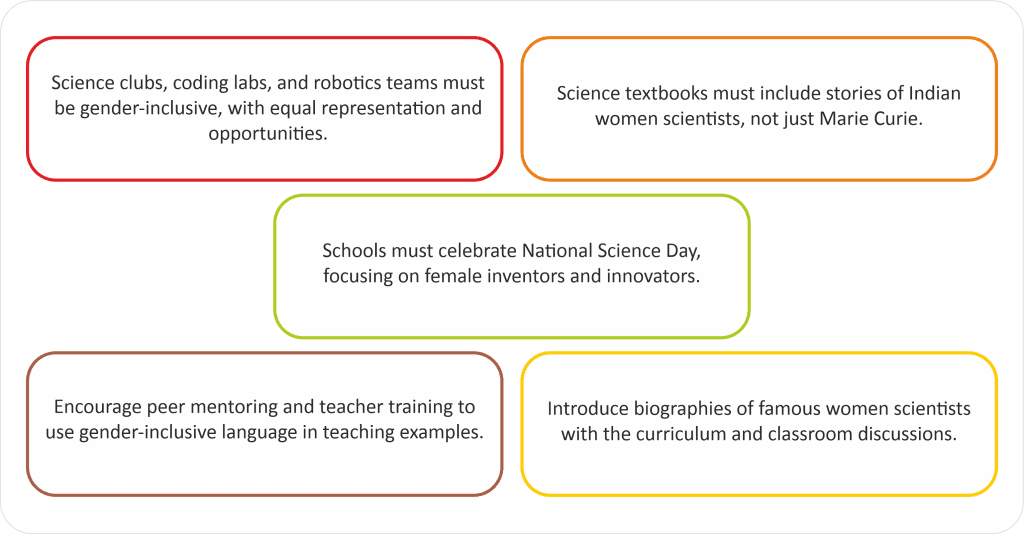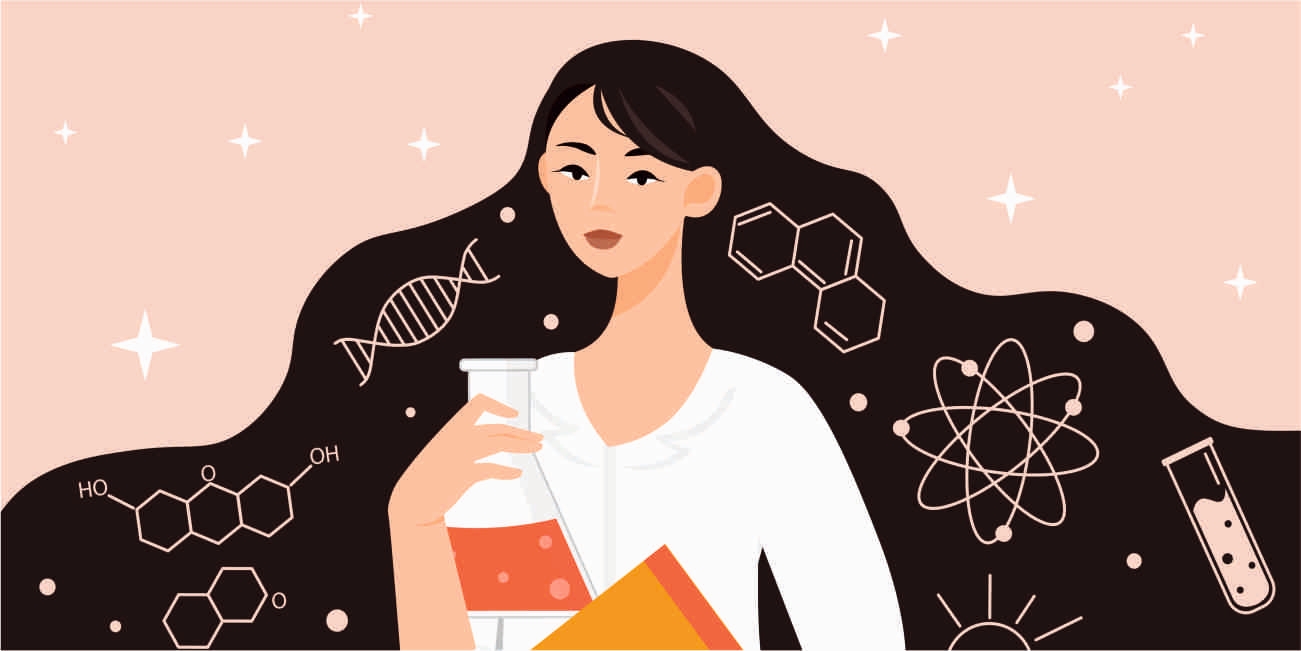![]()
Celebrating women who broke barriers, led revolutions, and moved science forward..
| In this article, you’ll discover: • The world knows their work. It is time to know their worth, too • From quiet beginnings to sky-high achievements • Nurturing scientific curiosity: A classroom revolution • Challenges that remain: Building a future where she belongs • How schools can build a pathway for girls in science |
Every time a girl is told “science is not for you”, a possibility is lost. But for every such instance, there is a story of a woman who proved otherwise and sparked a revolution in the classroom and laboratories.
Picture this: A young girl in rural Uttar Pradesh dreams of space and the stars. One day, she becomes the Deputy Director of India’s Mars Mission. Sounds like fiction, right? Well, it is not. It is Dr. Ritu Karidhal Srivastava’s story.
It is one of the many examples that prove why celebrating women pioneers in science isn’t just long-awaited; it is essential.
| The 2022 Women in STEM: A CSIR Survey Towards Gender Parity report by the National Institute of Science Communication and Policy Research claims that, while India produces the highest percentage of women STEM graduates in the world (about 40%), their share in STEM jobs in the country is very low at 14% and needs to be improved. |
Yet, women’s contribution to science has been magnificent, where they have shattered glass ceilings, made breakthrough discoveries, and continued to inspire young minds. However, before we look forward, we must listen to the voices of history left behind.
The world knows their work. It is time to know their worth, too.
For centuries, women in STEM (Science, Technology, Engineering, and Mathematics) were treated as footnotes instead of headline makers. In India, social expectations and limited access to education meant only a few women dared to dream of a scientific future. And those who did, altered the world of science forever.
 |  |
Edavalath Kakkat Janaki Ammal, a visionary botanist born in 1897, was one of the first Indian women to earn a doctorate in science. Her work in plant breeding, cytogenetics, and phytogeography continues to shape Indian agriculture even today. Equally inspirational was Dr. Asima Chatterjee, a trailblazer in organic chemistry. Her research led to the development of several anti-epileptic, anti-convulsive, and chemotherapy drugs. She made history as the first Indian woman to receive a Doctorate of Science.
These are female innovators in science whose perseverance opened doors, and their stories now inspire a new generation.
From quiet beginnings to sky-high achievements
They came from small towns and walked through silent corridors only to break barriers and build new foundations for those who would follow.
| Dr. Tessy Thomas – (The Missile Woman of India) When India’s Agni V missile soared into the sky, so did the hopes of thousands of aspiring women scientists. At the helm was Dr. Tessy Thomas, the first woman to lead a missile project in India. Hailing from Alappuzha in Kerala, she grew up witnessing rocket launches in Thumba. Today, she is not just a scientist; She is a role model, proving that girls from anywhere in India can aim for the stars, quite literally. |  |
| Dr. Gagandeep Kang – (India’s Vaccine Warrior) A renowned microbiologist and virologist, and a pioneer in vaccinology, Dr. Gagandeep Kang became the first Indian woman to be elected as a Fellow of the Royal Society in London in 2019. Her expertise in rotavirus research and public health policies have saved countless children’s lives. Known for her fieldwork and for being deeply connected to grassroot realities, she exemplifies the impact of women in STEM. |  |
| Dr. Indira Hinduja – (Pioneer of India’s First Test-tube Baby) In 1986, India witnessed a medical marvel, the birth of its first test-tube baby. Behind this breakthrough was Dr. Indira Hinduja, a gynaecologist, obstetrician and infertility specialist who revolutionised reproductive medicine in India. If we speak of women-led scientific discoveries, she has several firsts to her credit, such as the first test-tube baby in India, the first GIFT baby, and the first IVF baby from a sperm donor. |  |
| Dr. Ritu Karidhal Srivastava – (The Woman Behind India’s Mars Mission) From Lucknow’s bustling lanes to ISRO’s mission control, Dr. Ritu Karidhal Srivastava’s journey is as cosmic as the Mars Orbiter she helped launch. As the Deputy Operations Director of Mangalyaan, she played a crucial role in India’s first interplanetary mission. Her story is a reminder that imagination, when guided by grit, knows no bounds……. |  |
Nurturing scientific curiosity: A classroom revolution
India’s National Education Policy (NEP) 2020 marks a new chapter for girls in science, promoting gender inclusivity in STEM through mentorship, scholarship and hands-on learning through coding, robotics, and more. This inspires female students to pursue science and technology careers. Government initiatives like Atal Tinkering Labs, Inspire Awards – MANAK, and Kishore Vaigyanik Protsahan Yojana (KVPY) encourage young minds to explore and innovate.
NCERT and CBSE schools are also reshaping textbooks to include inspiring stories of Indian women scientists, making science more inclusive and relatable for girls. Yet, challenges remain.
Indian women scientists are only 14% of the 2,80,000 scientists, engineers, and technologists employed in research institutions in the country.
To close this gap, scholarships such as the AICTE Pragati scheme support girls pursuing technical education. The seeds of change are being sown in classrooms. Now, the focus must shift to nurturing these aspirations with long-term mentorship and sustained encouragement.
Challenges that remain: Building a future where she belongs
The journey for women in science is progressing, but it is not yet complete. While we celebrate women in science for their remarkable contributions, deep-rooted challenges continue to persist – even within educational institutions. From unconscious gender bias in classrooms to the lack of female role models in science education, these barriers begin early. Many girls lose interest or confidence in STEM subjects long before they reach college, contributing to what’s often called the “leaky pipeline.”
To reverse this, schools must take the lead in creating a supportive and inclusive learning environment. This includes ensuring equal access to labs and leadership roles in science clubs, introducing flexible learning pathways, and many other such instances. These aren’t extras – they are essential changes that reflect the real-world requirements of girls who envision to becomes future scientists.
How schools can build a pathway for girls in science To witness more women pioneers in science, we must begin by nurturing their dreams in the classroom.

At VIBGYOR Group of Schools, we have introduced the VIBGYOR ACE Programme, which is a well-structured, two-year integrated curriculum designed for Science students in Grades 11 and 12. It offers a balanced approach that prepares learners for both board examinations and national-level entrance tests like JEE, NEET, and CUET. With experienced educators and a clear academic focus, the programme supports students in achieving their goals with confidence and clarity.
India’s scientific future is not just bright. It can thrive and be inclusive if we choose to make it so. She may not know it yet, but the girl walking in the school corridor and scribbling in her science notebook could be the next generation of women scientists who change the world. They deserve a world that motivates them, not one that holds them back. It is time to celebrate and invest in women pioneers in science with policies and platforms that make space for every curious mind. Let’s build classrooms and communities where scientific curiosity is nurtured in every student, regardless of gender. Because the future is not just female. It is brilliant, bold, and full of discovery.
